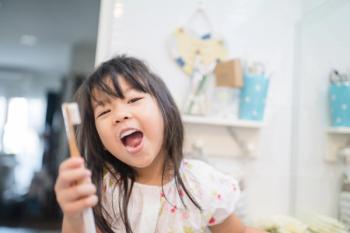
Assessing Risk Factors, Pathophysiology of Freezing of Gait in PD
Freezing of gait incidence among patients with Parkinson disease (PD) was associated with older age, more severe motor symptoms, postural instability/gait difficulty clinical phenotype, and other risk factors.
Disease severity and having the postural instability/gait difficulty (PIGD) clinical phenotype was associated with freezing of gait (FOG) incidence among patients with
As a common and difficult symptom of PD, FOG poses a significant risk to balance and impaired quality of life in patients, as well as increases the risk of frequent falls. The exact pathophysiological mechanism of FOG remains poorly understood, but prevalence has been shown to increase as PD progresses, as well as when patients experience
“NMS are associated with dysfunction in nondopaminergic neuronal systems, such as dorsal raphe nucleus (DRN). The DRN projects to areas implicated in motor control and emotion control, such as the cerebral cortical–basal ganglia–thalamic circuits and the limbic system,” explained the study authors.
With prior studies suggesting that FOG is a "circuitopathy" that is associated with a breakdown in communication between the cortex, subcortical structures, and the brainstem, the researchers hypothesized that the DRN may be a key node influencing the circuit.
“DRN lesions may lead to an increase in pathological conflict, which could be related to motor control processes that are responsible for FOG," they wrote.
They collected cross-sectional survey data of 453 participants with PD from the the Second Xiangya Hospital of Central South University, China, to investigate factors associated with FOG and to evaluate whether DRN is associated with its pathophysiology.
Participants were divided into 2 groups: patients with FOG (PD-FOG) and those without (PD-nFOG), according to the Freezing of Gait Questionnaire. Demographic characteristics, clinical features, and motor and NMS assessments of patients with PD were recorded.
Both groups were assessed via univariate statistical analysis, with regression analysis then performed to examine related factors. Resting-state functional MRI data were also acquired from 20 patients with PD-FOG, 21 with PD-nFOG, and 22 healthy controls who were randomly chosen.
“We defined seeds in the DRN to evaluate functional connectivity (FC) patterns,” said the researchers.
Overall, the requency of FOG was 11.9% (n = 54) among the study cohort. Patients in the PD-FOG group were significantly older and had a longer disease duration, lower body mass index, lower educational level, and higher levodopa equivalent daily dose than those of the PD-nFOG group, with several differences observed regarding motor and nonmotor symptom burden:
- The PD-FOG group had more severe motor symptoms and worse quality of life vs the PD-nFOG group, based on higher scores observed in the Unified PD Rating Scale (UPDRS) (Part I, II, III and IV) and the Parkinson's Disease Questionnaire 39
- The PD-FOG group had a significantly higher proportion of dyskinesia (13% vs 4%) and PD wearing-off (42.6% vs 7.8%)
- Constituent ratios of different clinical phenotypes (tremor dominant [TD] and PIGD) showed that a higher proportion of the PD-FOG group had the PIGD clinical phenotype (TD, 14.8%; PIGD, 68.5%) vs the PD-nFOG group (TD, 49.6%; PIGD, 39.1%)
- PD-FOG group experienced more depression (53.7% vs 25.8%) and impaired sleep function than those in the PD-nFOG group
Logistic regression analysis further showed that Hoehn & Yahr (H&Y) stage of at least 3, UPDRS-III scores, PIGD clinical phenotype, and excessive daytime sleepiness were associated with FOG.
Significantly lower FC between the DRN and some cortical structures, including the supplementary motor area, left superior frontal gyrus, and left median cingulated cortex was also observed in patients with PD-FOG vs healthy controls and patients with PD-nFOG.
The researchers concluded that further research is warranted to identify the most suitable serotonergic target to treat nonmotor symptoms and FOG.
“These results demonstrate that the severity of PD and PIGD clinical phenotype are associated factors for freezing and that DRN dysfunction may play a key role in PD-related NMS and FOG. An abnormal cortical and brainstem networks may contribute to the mechanisms underlying FOG,” they said.
Reference
Lv L, Zhang H, Tan X, et al. Associated factors and abnormal dorsal raphe nucleus connectivity patterns of freezing of gait in Parkinson’s disease. J Neurol. Published online August 6, 2022. doi:10.1007/s00415-022-11294-6
Newsletter
Stay ahead of policy, cost, and value—subscribe to AJMC for expert insights at the intersection of clinical care and health economics.













































